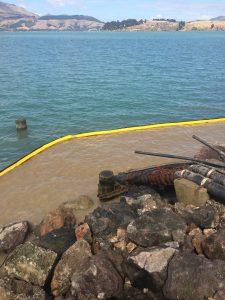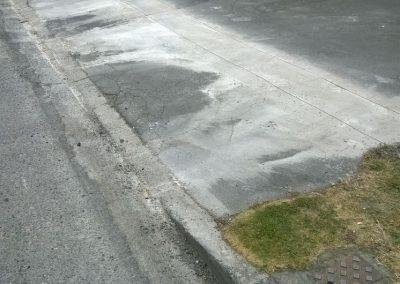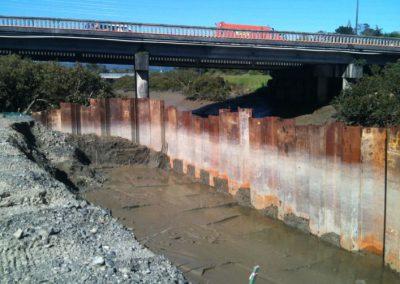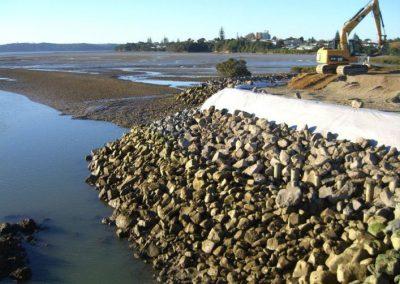Specific Tasks
Coastal marine
By ‘coastal marine area’ (CMA), we mean the foreshore and seabed below mean high-water spring tide (MHWS). Types of earthworks in the CMA usually disturb the foreshore or seabed, and include reclamation activities, coastal erosion protection works construction eg seawalls, piling and abutment construction for wharves and bridges, construction of stormwater outfalls and trenching.
What is different about the CMA?
The fundamental principles of ESC, such as timing and staging of works, and isolating the earthworks site from clean water while minimising the discharge of dirty water, still apply to works in the CMA. However, some erosion and sediment control issues and practices are different in the marine environment, because:
- Marine earthwork sites are often affected by tides or tidal currents. Access may need to be managed to the inter-tidal areas, so that works can be staged in low tide conditions
- Earthworks in the marine environment usually happen next to land. (Note: Marine dredging and associated disposal activities are beyond the scope of this toolbox.) The amount of exposure the site has to waves and tides will influence the potential effects and the practicalities around containing sediment discharges
- Marine sediment has different physical and chemical properties to sediment from dry land or freshwater body catchments. ‘Terrigenous sediment’ (derived from land) is usually made up of fine clay particles. Marine sediments are usually more porous, so are well oxygenated. Because they get rubbed together, their edges are not as sharp as terrigenous particles. As a consequence, the effects of marine sediments on marine biota are less adverse than effects of terrigenous sediment
- Salt water is a natural flocculant for sediment (clay particles) that are derived from the land and can limit the spread of clay sediments
Works within the CMA usually require resource consent, and the application will need to address the potential environmental effects and how these will be mitigated. Remember though that the coastal marine environment is very dynamic, and each site and activity will potentially encounter different effects.
We have covered these specific CMA activities and how they can be mitigated for sediment control:




